

|
The film of
Pied Piper is released under the same name. |
7 August 1942 Click for larger image
Click for larger image
Lieutenant Commander Nevil Shute Norway's signature is seen here on an 7th August 1942 DMWD document relating to the Swallow Glider. ( JA ) |
August 1942Most Secret is finished but censored till war's end. Shute is not at all happy. Most Secret features a flamethrower mounted on a French fishing boat. Shute had attended a test of an anti-air attack flamethrower mounted on a French fishing boat the previous year. |
1942 - 1943Shute developed Fresh Water Stills to provide drinking water for lifeboats. The DMWD Technical History records "The work was commenced without official requirement on the instructions of Lt Cdr N.S.Norway RNVR whose foresight anticipated the arising of the requirement". |
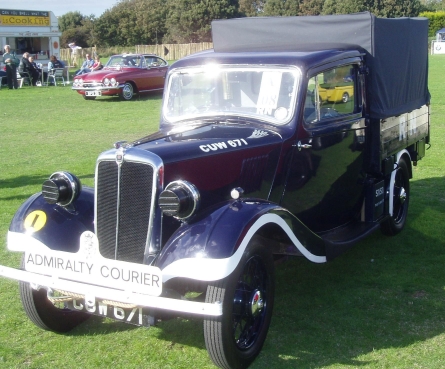
Featured in Most Secret (written in 1942) as a 'little khaki-coloured van with a canvas top'and then in Pastoral (1944) as a 'small Austin truck with the canvas canopy over the rear body', this vehicle was linked in both novels to a service romance. It seems likely Shute used a similar vehicle in his work at the DMWD. ( DDT ) |
|
Shute worked on the Grasshopper landing craft multiple rocket launcher, which evolved into the Rocket Landing Craft firing over 1,000 rockets in salvos. April 11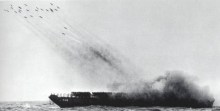 Click for larger image
Click for larger image
Shute was the head of team at the DMWD dealing with rocketry. This Rocket Craft was first tested on April 11 1943. It fired 1,080 rockets in batches of 33. All the rockets, carrying a total of 17 tons of explosives, were fired within 26 seconds creating an intense bombardment. The heat on board was fierce and aiming the entire craft was critical. ( IWM A28017) 1943 Early - 1944 Late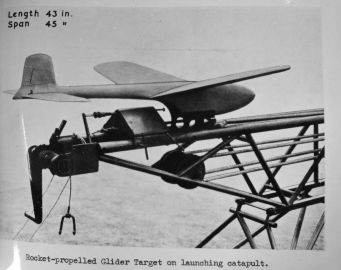
During this period Shute designed the rocket propelled gunnery practice Target Glider. He also oversaw the Swallow Glider which was a Barnes Wallis proposed, clockwork-controlled smoke laying glider. The Swallow was to be launched from an LCT (Landing Craft Tanks) at the invasion beaches. International Model Aircraft who also made Frog models built both gliders. |
||
|
Bert Judge, seen here in 2004, was doing development work for International Model Aircraft (IMA) during WW2 when Shute used IMA to build the Target Glider and the Swallow smoke laying glider projects. Bert recalls that Shute usually visited with Alec Menhinick and WREN Frances Randall. Bert says Shute was a man under pressure and for Shute "Menhinick proved to be an excellent right hand man". WREN Frances was shown how to trim the gliders for flight and how to launch them from the catapults. In turn she trained other WRENs who came under the overall direction of Menhinick. Bert's duties included a long, tedious wartime journey in overcrowded trains to Ardrossan in Scotland to instruct WREN's in setting up the target gliders. (Photo: JA 2004) |
 |
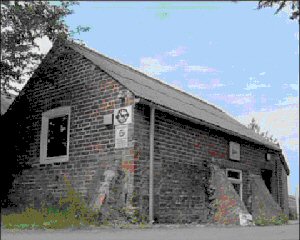
|
The Wendy House on Hayling Island. |
7 September 1943 - 12 January 1944Nine tests of the Grand Panjandrum are made. All were filmed and are in the Imperial War Museum archives |
November 12Shute tests the steering "controls" at the first steering trials of the rocket propelled Grand Panjandrum at Westward Ho! Shute was a big fan of rockets. Shute is seen here at the controls of the rocket propelled, explosive filled, Grand Panjandrum in 1943. (Photo: TSW / DH ) |
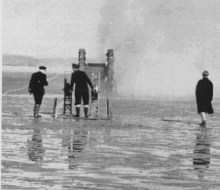 Click for larger image
Click for larger image
|
|
|
1943 LateThe Swallow, a clockwork-controlled smoke-laying pilotless glider, is tested for its ability to fly the required path and height. |
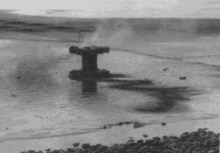
The Grand Panjandrum in its death throes in January 1944. (Photo:
TSW /
DH )
|
|
The Swallow pilotless smoke-laying glider was designed by Barnes Wallis and controlled by clockwork. The aircraft was 12 feet long with a wingspan of 18 feet. Designed to be launched from a landing craft, it was created to lay a smoke screen to protect the invading troops. ( JA ) |
February 14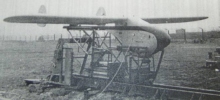 Click for larger image
Click for larger image
Shute attends a successful smoke laying trial of The Swallow smoke laying glider at Lepe on the Beaulieu River near Exbury House. Although The Swallow was ultimately successful in laying a dense smoke screen, it was not perfected in time for D-Day. |
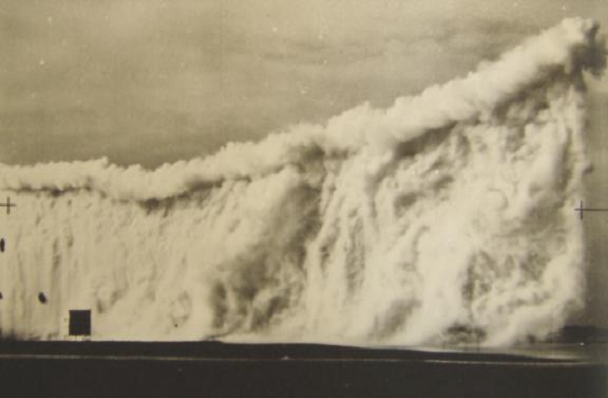
|
A substantial smokescreen is laid by The Swallow glider |
|
Starting in late February Shute writes a series of 6 delightful "Second Front" articles and another great article called "Beach Assault" about the approach of D-Day. Much of the detail is later used in Requiem for a Wren. |
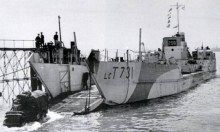
The LCT Mark 4 (Landing Craft Tanks) was much admired by Shute as a very practical piece of war machinery. Carrying 6 heavy or 9 medium tanks it could land them in 30 inches of water. It featured in several of Shute's pre D-Day articles and Janet Prentice, in Requiem For A Wren, shot down the refugee laden German plane using a 20mm Oerlikon gun mounted on an LCT Mk 4. (
IWM A23673)
|
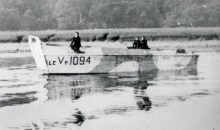 Click for larger image
Click for larger image
Three Wrens in an LCVP (Landing Craft Vehicle / Personnel) on the Beaulieu River. Janet Prentice in Requiem often travels in these craft. The LCVP carried one vehicle or 36 men and were fast. The crew was a Wren Petty Officer Coxswain and 2 Wrens. ( SG ) |